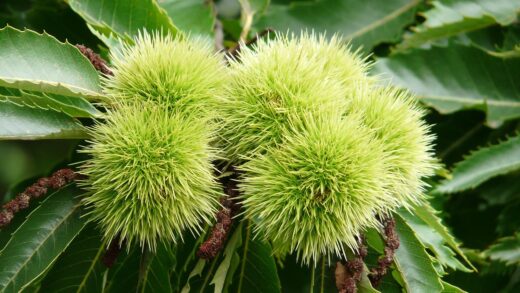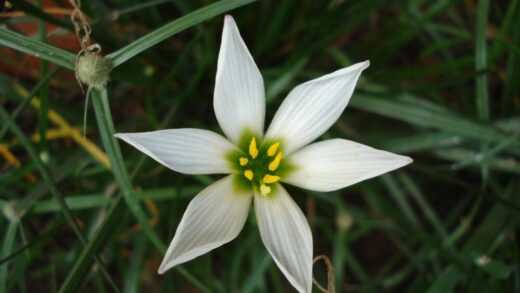The diseases and pests of the bachelor palm

One of the most celebrated attributes of the Zamioculcas zamiifolia is its remarkable resistance to diseases and pests, making it an exceptionally trouble-free houseplant. This resilience is largely due to its tough, waxy leaves and robust nature, which do not provide an inviting target for many common plant afflictions. However, no plant is entirely immune, and under certain conditions, particularly when stressed, the ZZ plant can become susceptible to a few issues. The most significant threat to its health is not a pest or a pathogen in the traditional sense, but rather the physiological disease of root rot, caused exclusively by overwatering. This condition, where excess moisture leads to the decay of the plant’s vital root and rhizome system, is the primary cause of decline in these plants. Therefore, proactive prevention through proper watering practices is the most effective form of disease management.
While fungal and bacterial diseases are rare, they can occasionally occur, typically in environments with high humidity and poor air circulation, which are generally unfavorable for the ZZ plant anyway. Leaf spot diseases may appear as brown or black spots on the foliage, but these are often isolated incidents that can be managed by simply pruning the affected leaf and improving environmental conditions. The plant’s natural toughness usually prevents such issues from becoming widespread. It is far more likely that any spots or blemishes are a result of physical damage or sunburn rather than a pathogenic infection.
On the pest front, the ZZ plant’s thick cuticle provides a strong defense against many sap-sucking insects. However, a few persistent pests can sometimes establish a population, especially on plants that are already weakened by other stressors like improper lighting or watering. The most common culprits are scale insects and mealybugs, which can hide in the crevices at the base of the leaves and stems. Spider mites are a less common, but possible, nuisance, particularly in very dry conditions.
Fortunately, managing these pests is usually straightforward due to the plant’s simple structure and smooth leaves. Early detection is key, and a regular inspection of your plant can help you catch an infestation before it becomes severe. Treatment often involves simple mechanical removal, such as wiping the pests away with a cotton swab dipped in rubbing alcohol, or washing the plant with a mild insecticidal soap. A healthy, well-cared-for ZZ plant is its own best defense, and by providing it with the right environment, you can almost entirely avoid any significant problems with diseases or pests.
The primary threat of root rot
The most pervasive and dangerous health issue for a Zamioculcas zamiifolia is not a contagious disease but a condition caused by improper care: root rot. This issue arises when the plant’s root system is subjected to prolonged periods of excessive moisture, either from watering too frequently or from soil and pots that do not drain properly. The waterlogged soil cuts off the oxygen supply to the roots, causing them to suffocate and die. These decaying roots then become a breeding ground for fungi and bacteria, which rapidly spread the rot throughout the root system and into the crucial water-storing rhizomes.
More articles on this topic
The initial symptoms of root rot can be confusingly similar to those of underwatering. The leaves may turn yellow, and the stems may become limp and start to wilt. This happens because the rotting roots are no longer able to absorb water and nutrients to supply the rest of the plant. A key distinguishing sign is the condition of the soil; if the plant is yellowing and the soil is damp, root rot is the almost certain culprit. In advanced stages, you may notice the base of the stems becoming soft, mushy, and brown or black.
Once root rot is suspected, immediate action is required to have any chance of saving the plant. Carefully remove the plant from its pot and wash away the soil to get a clear view of the roots and rhizomes. Healthy parts will be firm and whitish-tan, while rotten sections will be dark, soft, and often have a foul odor. Using a sterile and sharp knife or pruning shears, you must meticulously cut away every single piece of rotted material. Be ruthless in this process, as leaving even a small amount of rot behind can allow the problem to return.
After trimming away all the decayed tissue, it can be beneficial to treat the remaining healthy rhizomes with a fungicide powder to kill any lingering spores. Then, the plant must be repotted into a brand new, or thoroughly sterilized, pot with fresh, dry, and extremely well-draining soil. Do not water the plant immediately after repotting. Give it at least a week to allow the cut surfaces to heal and callus over before providing a small amount of water. Recovery is not guaranteed, but this aggressive intervention is the only viable treatment.
Common houseplant pests
Although the Zamioculcas zamiifolia is highly pest-resistant, it can occasionally fall prey to common houseplant insects, particularly if it is stressed or situated near other infested plants. Scale insects are one of the more likely culprits. These small, immobile pests appear as tiny brown or tan bumps on the stems and undersides of the leaves. They have a hard, waxy shell that protects them while they feed on the plant’s sap. A heavy infestation can lead to yellowing leaves and reduced vigor.
More articles on this topic
Mealybugs are another pest that can sometimes trouble a ZZ plant. These are small, soft-bodied insects that cover themselves in a white, cottony substance. They tend to cluster in protected areas, such as the nooks where the leaflets join the main stem or at the very base of the plant near the soil line. Like scale, they feed on plant sap, and a large population can cause stunted growth and leaf drop. The sticky honeydew they excrete can also lead to the growth of sooty mold.
Spider mites are a less frequent but possible pest, thriving in the warm, dry conditions that ZZ plants tolerate. These minuscule arachnids are difficult to see with the naked eye, but their presence is often revealed by fine, silky webbing on the plant, particularly on new growth. They cause damage by piercing the leaf cells to feed, resulting in a stippled or speckled appearance on the leaves. A severe infestation can cause leaves to turn yellow or bronze and eventually fall off.
Aphids are another common sap-sucking pest, though they tend to prefer softer, more tender new growth, making the tough foliage of a mature ZZ plant less appealing. However, they may attack fresh, young shoots as they emerge. Aphids are small, pear-shaped insects that can be green, black, or brown, and they typically congregate in clusters. Regular inspection is the best way to catch any of these pest problems early before they escalate into a major issue.
Methods for pest control and treatment
When you discover pests on your Zamioculcas zamiifolia, the first step is to isolate the plant from any other houseplants you may have. This crucial action prevents the infestation from spreading across your collection while you treat the affected plant. Moving it to a separate room allows you to focus your treatment efforts without worrying about cross-contamination. This simple quarantine measure can save you a great deal of time and effort in the long run.
For pests like mealybugs and scale, the most effective initial treatment is manual removal. You can dip a cotton swab or a soft cloth in isopropyl (rubbing) alcohol and use it to directly wipe the pests off the plant’s stems and leaves. The alcohol dissolves the waxy protective coating of the insects, killing them on contact. This method is highly targeted and avoids the use of chemical pesticides, making it a safe option for indoor use. Be thorough and check all the hidden crevices where these pests like to congregate.
After manual removal, or for a more widespread infestation of pests like spider mites or aphids, washing the plant can be very effective. Take the plant to a sink or shower and use a gentle stream of lukewarm water to spray down the entire plant, paying close attention to the undersides of the leaves. This will physically dislodge and wash away many of the pests. For a more potent treatment, you can follow this up by spraying the plant with an insecticidal soap or a horticultural oil like neem oil. These products work by smothering the insects and are generally safe for the plant when used according to the label directions.
Consistency is key to successfully eradicating a pest problem. One treatment is rarely enough, as pest eggs can survive and hatch later. You will likely need to repeat your chosen treatment method every five to seven days for several weeks to break the life cycle of the pests. Continue to inspect the plant closely during this time. Only when you have seen no signs of pests for at least two to three consecutive weeks should you consider moving the plant out of quarantine and back to its original location.
Prevention as the best defense
The most effective strategy for dealing with diseases and pests on your Zamioculcas zamiifolia is to prevent them from occurring in the first place. A healthy, thriving plant is naturally more resistant to problems than a plant that is stressed by poor growing conditions. The foundation of this prevention is providing the plant with the care it needs: appropriate light, a well-draining soil mix, and, most importantly, a correct watering routine that avoids waterlogged soil at all costs.
Regularly inspecting your plants is a simple yet powerful preventative habit. Make it a routine to look over your ZZ plant every time you check its soil for watering. Examine the tops and bottoms of the leaves, the stems, and the area near the soil line. This quick check can help you spot the very first signs of a pest, like a single mealybug or a few scale insects, allowing you to take action immediately before a small problem becomes a full-blown infestation. Early detection makes treatment significantly easier and more effective.
Maintaining good plant hygiene is also important. Keep the leaves clean by occasionally wiping them down with a damp cloth. This not only improves the plant’s appearance and ability to photosynthesize but also removes any dust or debris that could harbor pests. Prune away any dead or yellowing leaves promptly, as decaying organic matter can sometimes attract pests or fungal issues. Ensuring good air circulation around the plant by not overcrowding it with other plants can also help to deter pests and prevent the development of fungal diseases.
Finally, be cautious when introducing new plants into your home. New acquisitions are a common vector for bringing pests indoors. It is a wise practice to quarantine any new plant for a few weeks in a separate location from your existing collection. During this quarantine period, inspect the new plant thoroughly for any signs of pests or disease. Only after you are confident that the new plant is healthy and pest-free should you introduce it to the rest of your houseplants. This simple quarantine protocol is one of the best defenses against widespread pest problems.



















